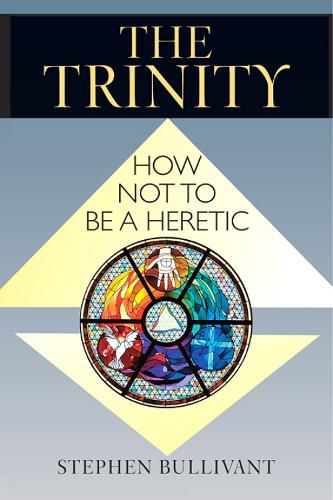Readings Newsletter
Become a Readings Member to make your shopping experience even easier.
Sign in or sign up for free!
You’re not far away from qualifying for FREE standard shipping within Australia
You’ve qualified for FREE standard shipping within Australia
The cart is loading…






Trinity is Christianity’s most basic description of who God actually is-and who he needs to be in order to save us. It is at the very heart of what Christians believe, and very little else in Christianity makes sense without it. Despite this, a great many Christians, including significant numbers of teachers, catechists, and preachers, do not feel confident in talking about it. It is not that they don’t believe in the Trinity, because they certainly do. But they are not altogether sure that what they think they believe about it is what they are supposed to, and they fear both revealing their ignorance, and leading others astray.
The central idea of this book is that, contrary to popular assumption, the Trinity is a very simple doctrine. It consists of just three short, deeply scriptural convictions: i) There is only one God; ii) Father, Son, and Holy Spirit are all God; and iii) Father, Son, and Holy Spirit are not the same. The Trinity: How Not to Be a Heretic explains how the earliest Christians came to be convinced by each statement, why they matter, and how-slowly, over a period of several centuries-it found a way of saying all three at once. Its sole purpose is to help Christians of all kinds better understand the Trinity so that they can then help others-Christians, non-Christians, and maybe even some not-yet Christians-better understand it too.
$9.00 standard shipping within Australia
FREE standard shipping within Australia for orders over $100.00
Express & International shipping calculated at checkout
Trinity is Christianity’s most basic description of who God actually is-and who he needs to be in order to save us. It is at the very heart of what Christians believe, and very little else in Christianity makes sense without it. Despite this, a great many Christians, including significant numbers of teachers, catechists, and preachers, do not feel confident in talking about it. It is not that they don’t believe in the Trinity, because they certainly do. But they are not altogether sure that what they think they believe about it is what they are supposed to, and they fear both revealing their ignorance, and leading others astray.
The central idea of this book is that, contrary to popular assumption, the Trinity is a very simple doctrine. It consists of just three short, deeply scriptural convictions: i) There is only one God; ii) Father, Son, and Holy Spirit are all God; and iii) Father, Son, and Holy Spirit are not the same. The Trinity: How Not to Be a Heretic explains how the earliest Christians came to be convinced by each statement, why they matter, and how-slowly, over a period of several centuries-it found a way of saying all three at once. Its sole purpose is to help Christians of all kinds better understand the Trinity so that they can then help others-Christians, non-Christians, and maybe even some not-yet Christians-better understand it too.